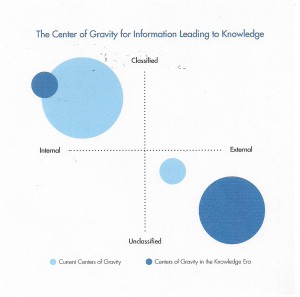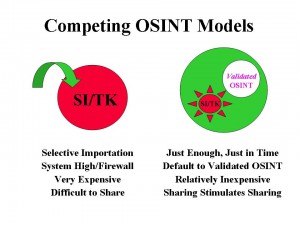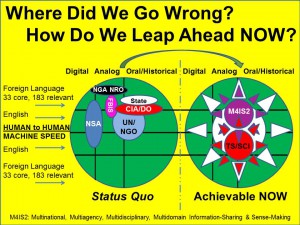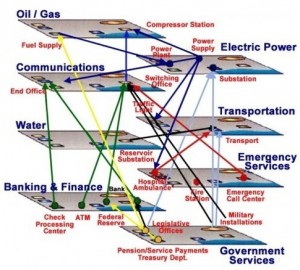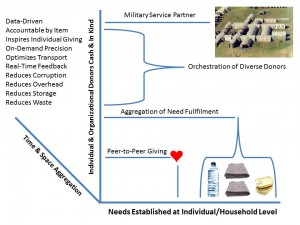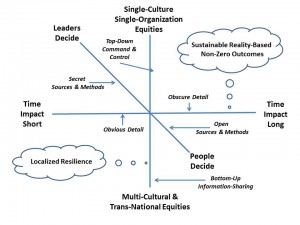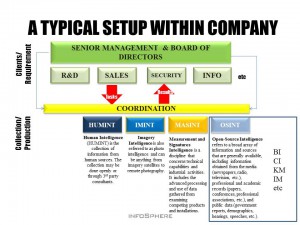
Source: Email from CEO of InfoSphere SA (SE)
InfoSphere CEO Comment: We never talk OSINT.. We talk sourceinfo. This is the Infosphere view. Remote is what you do with your computer, phone, etc. Direct is when you collect on the ground. Covert or Overt – lines are blurry. The output is intelligence, the input data and information. We argue that HUMOSI SIGOSI, etc is a part of the game. When you monitor social media like twitter or look into a facebook profile with a fake profile –is that HUM or SIG or OSI Intelligence is defined by the output…
Phi Beta Iota: We include HUMINT-acquired handheld video and photos in IMINT, and we have a separate SIGINT column for HUMINT-enabled close-in SIGINT, but generally speaking this slide and the capabilities it represents are “best in class.” InfoSphere remains the only commercial intelligence provider we take seriously. Everyone else has practical, intellectual, ethical, or financial issues that in our view render less than full scope. Most governments do not do OSINT, they have an open source dribble into all-source that is largely comatose, the Nordics and Netherlands being the exceptions. InfoSphere SA is also the only company we have found that is truly able, over the past decade, to BOTH place people on the ground in any of 33 languages within 24-72 hours AND properly process, visualize, and deliver the full spectrum collection in an actionable form understandable by a consumer with a three color mind-set (red, yellow, green). See Also: SiloBreaker (search and analytics tool both free and for fee).

